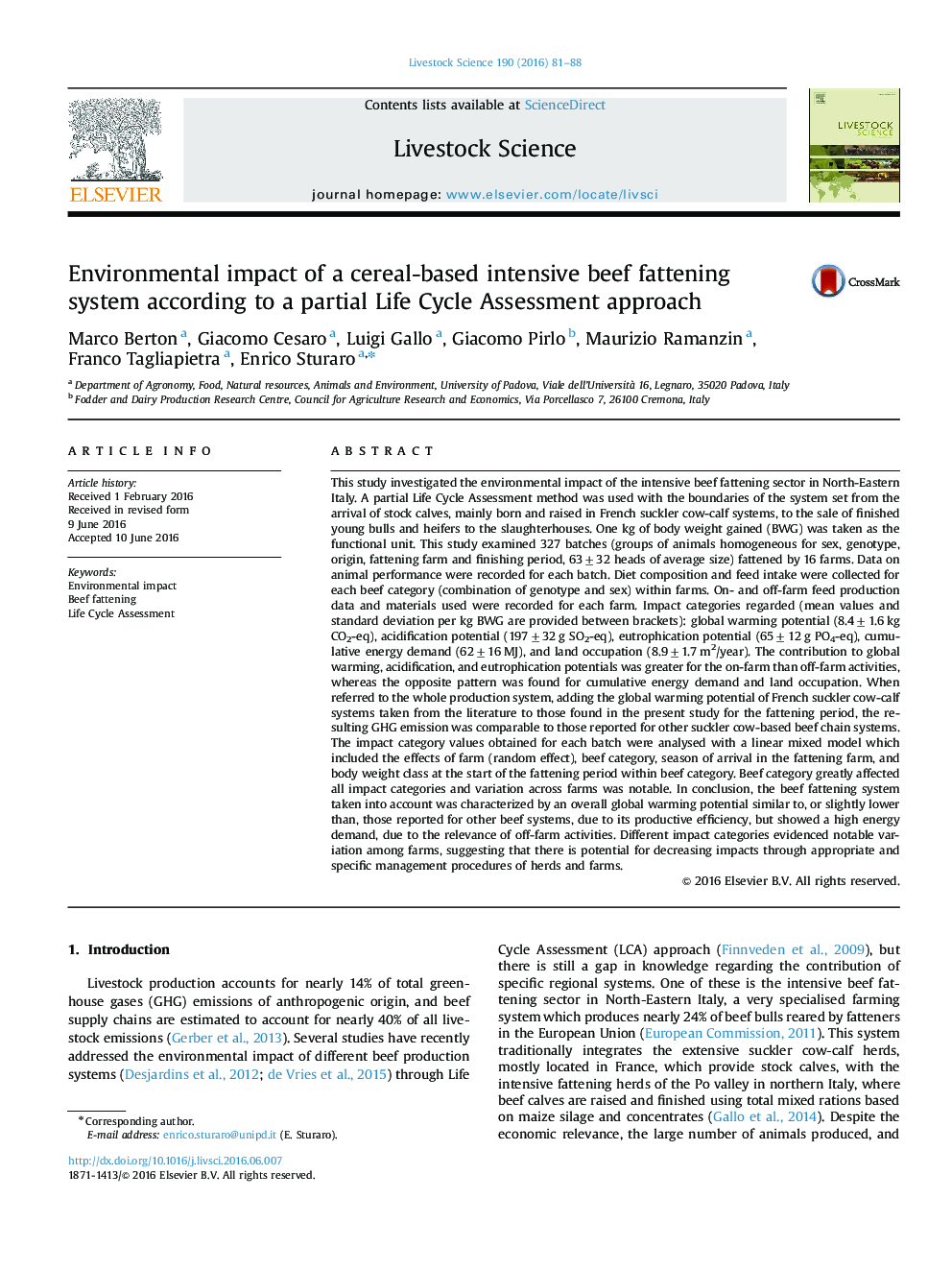| کد مقاله | کد نشریه | سال انتشار | مقاله انگلیسی | نسخه تمام متن |
|---|---|---|---|---|
| 2446876 | 1553942 | 2016 | 8 صفحه PDF | دانلود رایگان |
• The environmental impact of an intensive beef fattening system was assessed.
• Global warming, acidification and eutrophication were mainly due to on-farm inputs.
• Energy and land occupation were mainly due to off-farm activities.
• The impact values were greatly affected by beef category.
• The notable variation across farms indicates the possibility for impact reduction.
This study investigated the environmental impact of the intensive beef fattening sector in North-Eastern Italy. A partial Life Cycle Assessment method was used with the boundaries of the system set from the arrival of stock calves, mainly born and raised in French suckler cow-calf systems, to the sale of finished young bulls and heifers to the slaughterhouses. One kg of body weight gained (BWG) was taken as the functional unit. This study examined 327 batches (groups of animals homogeneous for sex, genotype, origin, fattening farm and finishing period, 63±32 heads of average size) fattened by 16 farms. Data on animal performance were recorded for each batch. Diet composition and feed intake were collected for each beef category (combination of genotype and sex) within farms. On- and off-farm feed production data and materials used were recorded for each farm. Impact categories regarded (mean values and standard deviation per kg BWG are provided between brackets): global warming potential (8.4±1.6 kg CO2-eq), acidification potential (197±32 g SO2-eq), eutrophication potential (65±12 g PO4-eq), cumulative energy demand (62±16 MJ), and land occupation (8.9±1.7 m2/year). The contribution to global warming, acidification, and eutrophication potentials was greater for the on-farm than off-farm activities, whereas the opposite pattern was found for cumulative energy demand and land occupation. When referred to the whole production system, adding the global warming potential of French suckler cow-calf systems taken from the literature to those found in the present study for the fattening period, the resulting GHG emission was comparable to those reported for other suckler cow-based beef chain systems. The impact category values obtained for each batch were analysed with a linear mixed model which included the effects of farm (random effect), beef category, season of arrival in the fattening farm, and body weight class at the start of the fattening period within beef category. Beef category greatly affected all impact categories and variation across farms was notable. In conclusion, the beef fattening system taken into account was characterized by an overall global warming potential similar to, or slightly lower than, those reported for other beef systems, due to its productive efficiency, but showed a high energy demand, due to the relevance of off-farm activities. Different impact categories evidenced notable variation among farms, suggesting that there is potential for decreasing impacts through appropriate and specific management procedures of herds and farms.
Journal: Livestock Science - Volume 190, August 2016, Pages 81–88
